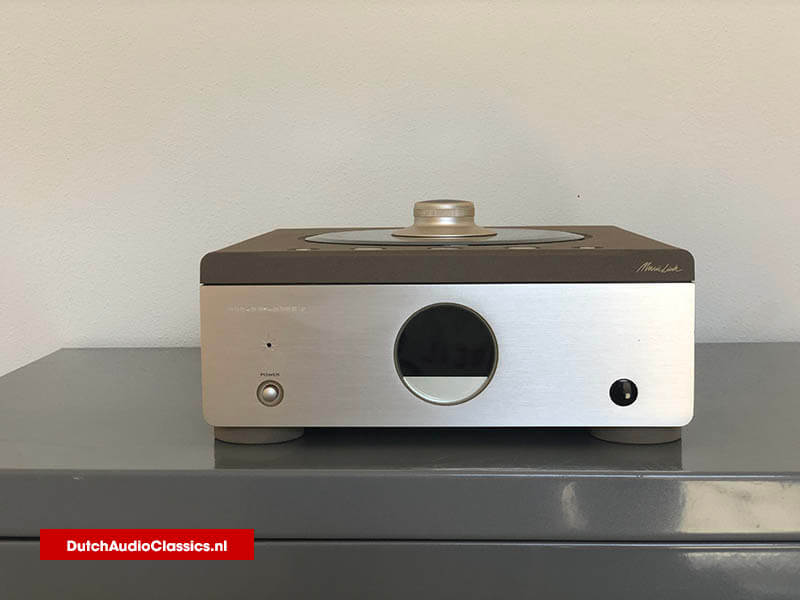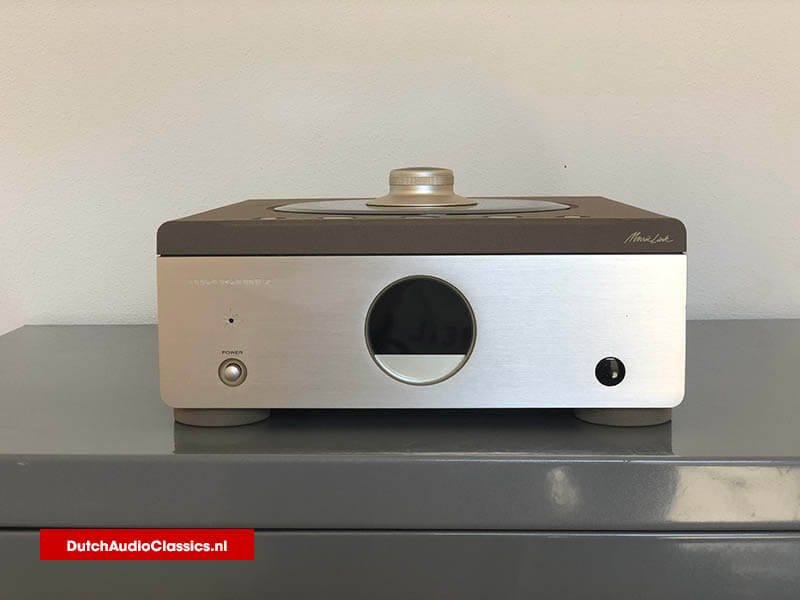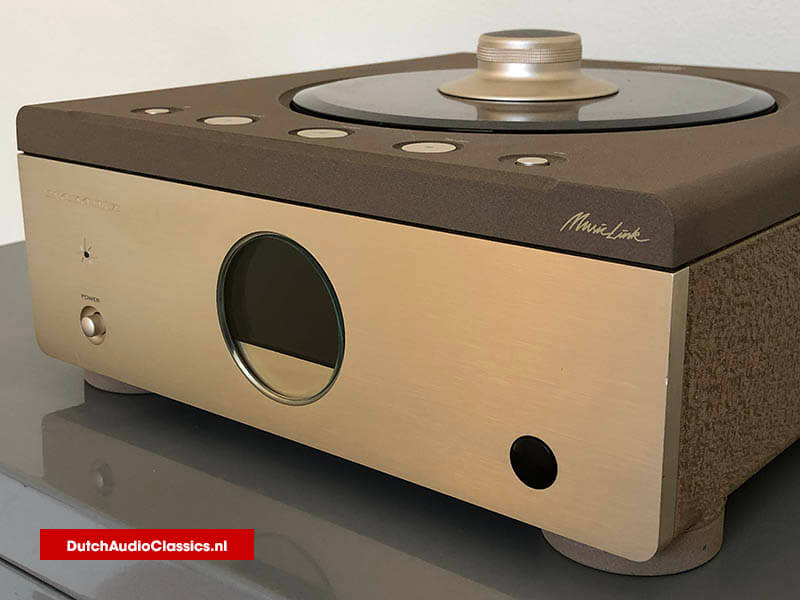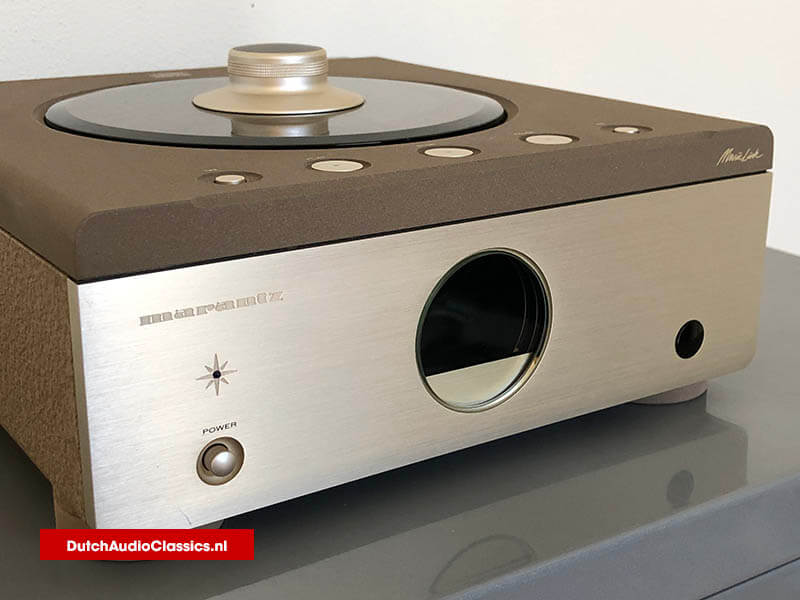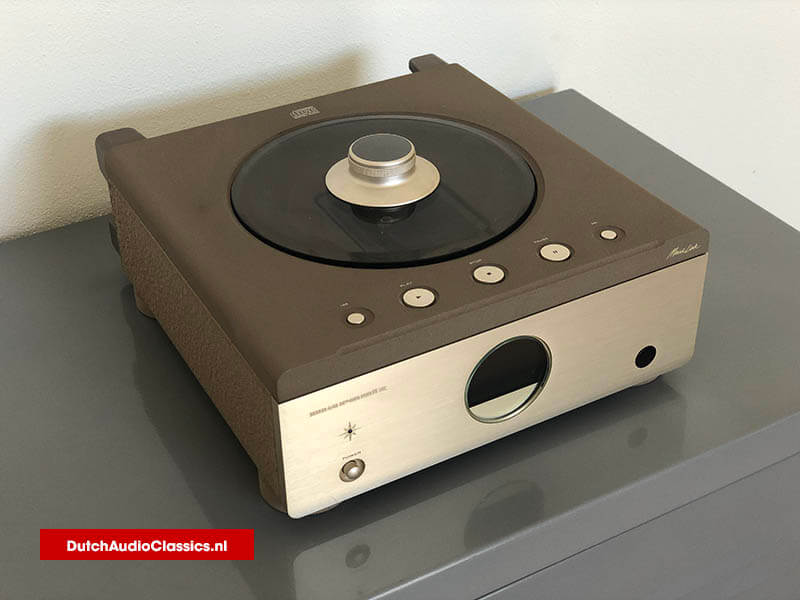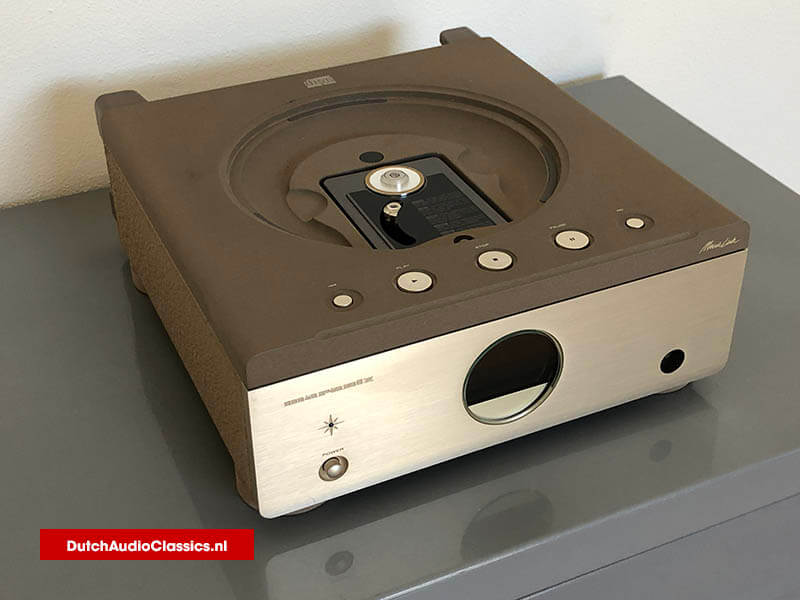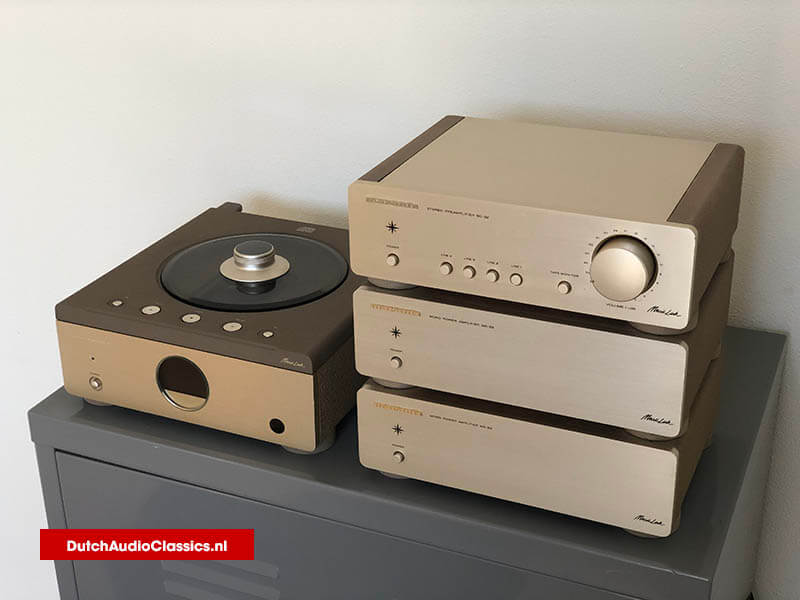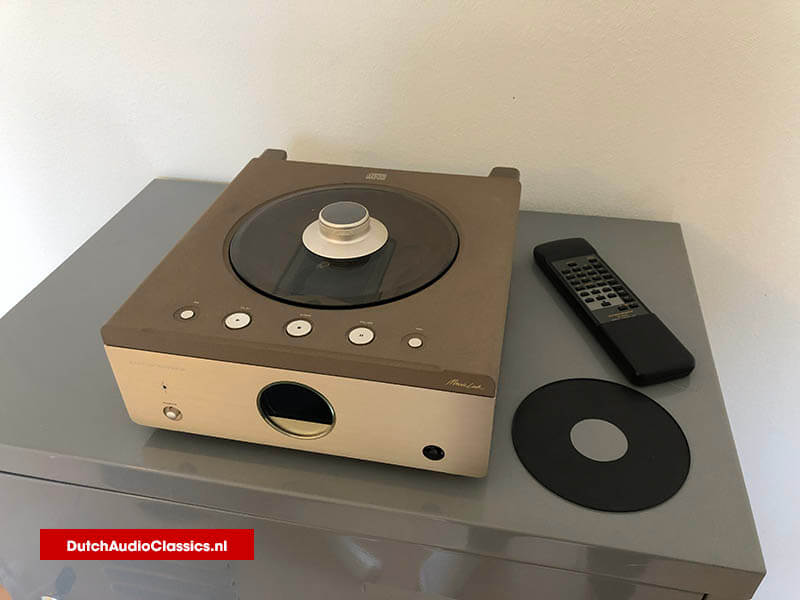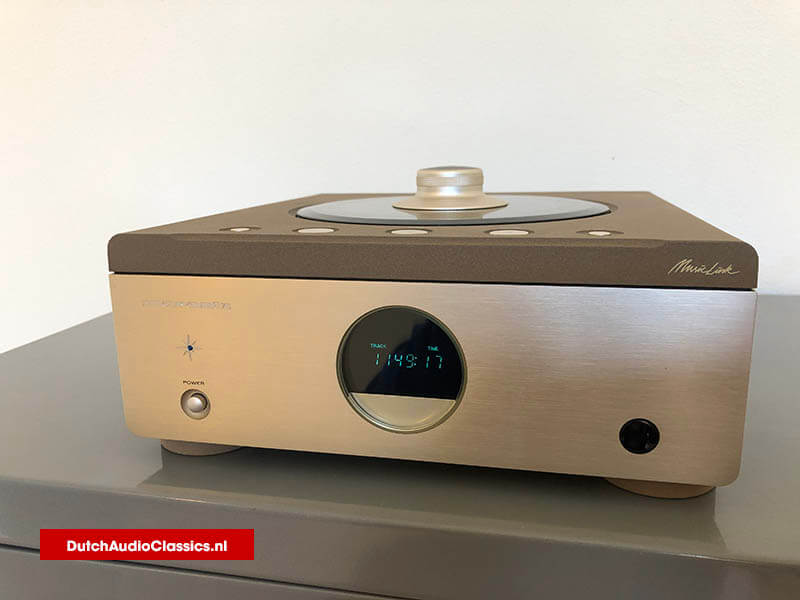Marantz's high-end Music Link combines stylish minimal design with outstanding sound — and a beautiful cdplayer!
Retuming to serious high-end manufacturing has always been a ' given' with Marantz, probably because the company never stopped flirting with it. Even during those times when it seemed that Marantz existed only to produce outrageously good yet inexpensive CD players, there was always something in the catalogue of appeal to high rollers: the legendary CD- 12 two-box CD player, a steady run of other high-ticket single-chassis CD players, the odd big-bucks integrated amplifier, the original Music Link components. Now the latter series has developed into something much more than a chi-chi space-saver system or an exercise in miniaturisation.
Marantz CD23Music Link

Ken Ishiwata.
Under the aegis of Ken Ishiwata, Music Link has been expanded to include a revised pre-amp and monoblocks, a phono pre- amp, a cost-no-object single- chassis CD player and a very limited run of turntables, the out- of- mothballs TT1000 now bearing a Mk II suffix. All that's lacking to complete a one-make system out of Music Link hardware is cabling and a pair of speakers, but I don't foresee the return of the Imperial 7. Given that Marantz is now involved in distributing Tannoy in most of Europe, it's likely that showgoers around the world will hear Music Link systems through the Scottish products. And given, too, that a full Music Link stack costs loadsamoney, the only Tannoys worthy of the flagship Marantz electronics are the company's classic dual-concentrics.
Pricing.
And we are talking lots of money. A complete Music Link package with both LP and CD sources and theleast expensive amplifiers in the all-champagne range leaves but £ 100 from £ 14,000; you can add to it a difference of a cool nine grand when the reference-grade SC 5 pre-amp and SM 5 power amp arrive. For this review, though, the system consists of the MA 23 monoblocks (£1800) and SC 23 pre- amp (£1000), the PH 22 phono amp (£1100), the CD 23 CD player (£4000) and the TT1000 Mk II (£6000 less arm). The review 1000 came fitted with a special version of the SME Series V arm, with certain parts gold-plated to match the Marantz look, while Ken Ishiwata graciously left his favourite cartridge in place for the listening sessions. It's a Koetsu Rosewood Signature — one of my all-time favourite cartridges — only Ken's was prepared by Suganosan himself.
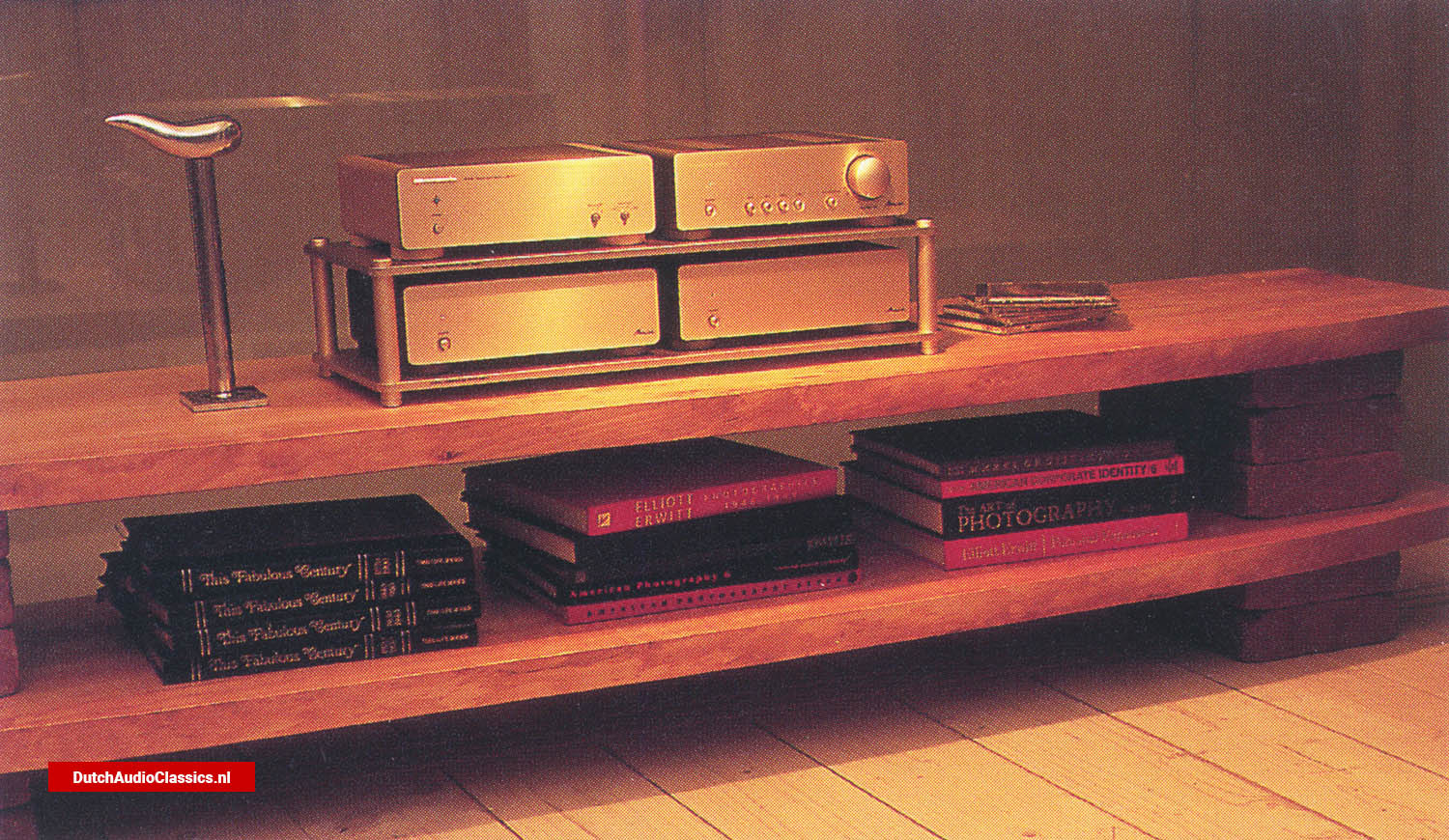
Marantz TT1000.
Make no mistake: this system is worthy of hosting that unique specimen. The Series V works beautifully with Koetsus — mine has carried Rosewood, Urushi and a Ken Chan — and the direct-drive TF1000 II, well, you just don't get more confidence-inspiring than a chassis made of a tuned- for-damping glass/aluminium sandwich. Weight? A porky 26.5kg less the outboard power supply. It's an horizon filler, too, measuring a mighty 517x142x410mm (whd). Underneath is the PLL quartz-controlled motor in a massive housing, driving a chunky aluminium die-cast platter topped with a suede mat. The armboard arrangement is a large Michell-like disc bolted securely to the chassis, the whole lot resting on four large, damped feet. The external power supply comes in a compact box bearing an on/off rocker switch; the TT1000 II itself wears only a stop button and two on-buttons, one for 33rpm and the other for 45rpm. Clean and simple... and drop-dead gorgeous.
Marantz CD23.
Sibling rivalry comes in the form of sweetest little CD spinner I've seen in ages. No, it's not quite the Power Rangers-styled techno-treasure seen in prototype form a few years back, with feet almost as big as the unit itself, but a move in the opposite direction: the production CD 23 single-box player is so minimalist, so unadorned and yet so stylish that you'll forgive Marantz for placing all the minor controls on the remote and leaving the 23 only with the basic buttonry. But the details that were fitted are truly eyecatching, noteworthy and almost 'alternative'.
With a footprint of only 250x281mm and a height of 124mm, this player seems like a transport-only device; it comes across like a glorified portable, but built to wartime specification. Inside is a fully-suspended CDM9 Pro transport and a hand-picked DAC7 Bitstream converter aided by an HDAM (Hyper Dynamic Amp Module) output stage for better dynamics. And while there is coaxial access to the digital data stream, I felt that little was gained by moving to other DACs. I'm neither a fanatical DAC7 booster nor a Bitstream decrier; I can only assume that this single-chassis device is simply a terrific illustration of how synergy and the careful factory matching of a CD player's two primary sections can obviate the need for external tweaking. Sound quality, though, isn't the 23's main attraction; that influence comes later. People just have to look at this device to issue an involuntary, 'Gimme!'

On top is a circular smoked-glass lid, removed manually by its big knurled handle. Underneath is the transport itself, capped by a magnetic clamp. And you must replace the glass lid for playback; you cannot expose the spinning CD to the elements. Along the front edge of the top plate are the basic controls, while the front panel bears a traditional Marantz-blue power-on indicator, an an/off switch, and... the coolest roundisplay this side of an Air-Tight. Solidly built, chunky, compact — it has guaranteed appeal for the sort of acquisitor who adores Minox cameras.
System.
Four identically-sized components complete the electronics portion of the package: the PH 22 phono amp 'see box], the SC 23 pre-amp and MA 23 monoblocks, each residing in vault-like 280x85x187mm (whd) enclosures.
At the centre of all the action is the SC 23 pre-amp, an update of the SC 22 with power supply revisions,better S/N ratio by 5dB, far greater frequency response ( 10-801cHz vs 20-20kHz, ± 3dB) and lower THD. This control module, like the phono and power amps, uses a non-magnetic, copper-shielded chassis to stop eddy currents from interacting with the music signal, so you can put away your VP! and Shakti bricks. All the unit offers across the front are on/off, four press buttons to choose numbered rather than labelled sources, a tape monitor button and a volume control. The rear is filled with substantial phono sockets — gold-plated of course — including normal and inverted phase outputs for bridging one's amplifiers.
On the receiving end are the MA 23 50W monoblocks, each bearing heavy die-cast end-cheeks (as on the 22 and 23), a substantial, mechanically-isolated toroidal transformer, and hefty binding posts accepting bare wire or banana plugs. Operation is Class AB, and the units run warm to the touch.
Because I'm fascinated by small objects of desire (model cars and miniature cameras are pet passions), I was probably pre-disposed toward a complete system which — turntable aside — occupies less cubic space than one channel of Krell amplification. But this didn't stop me from treating it like grown-up hi-fi. Using cables from Nirvana and XLO, I fed the Music Link into Celestion Kingstons, a couple of Sonus Fabers, LS3/5As, and Apogee Ribbon Monitors, prices ranging from £650 to a max of £2500 per pair. And I confess to using (possibly) warped logic in focusing on small-ish speakers. It goes something like this: In addition to a general trend away from large speaker systems — size rather than price being the deterrent — I have assumed that speaker dimensions are doubly important to the potential Music Link owner. Why? Because I'm also assuming that the diminutive measurements of the Music Link components will prove to be the initial selling point; visual impact always precedes intellectual assessment whether we're talking about hi-fi, pets, cars or — yes — people. I'm not suggesting for a moment that compactness is the prime raison d'etre for this series, only that it's the series' most distinguishing feature. It is to Music Link what skinny toggle switches and handles are to Audio Research. So it follows, at least to me, that the set will probably be completed with small-ish speakers. But notice, too, that the speakers listed above also resemble Music Link in another way: all are pedigreed and possibly overdeveloped. Certainly they're all over-engineered.
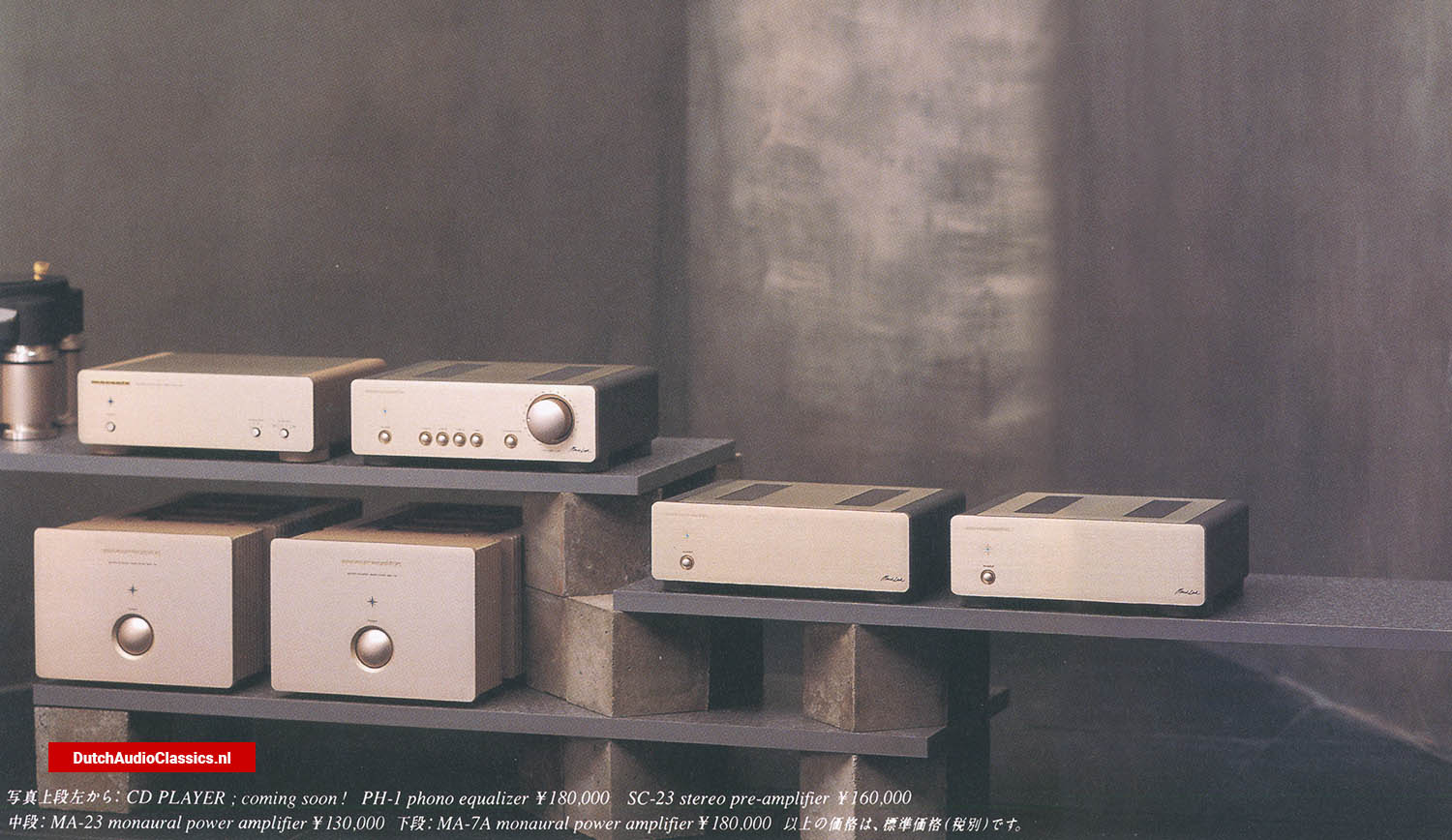
The hots for Ken Ishiwata.
Time to talk about Ken Ishiwata again, even at the risk of giving the impression that I have the hots for the guy. Open the Marantz catalogue with 'Audiophile' on the cover and you'll see KI's pic on the inside, along with his introduction to the range. Yet again, I'm reminded of the relationship between the sound of a hi-fi component or system and the designer or main motivator. So, to appreciate Music Link, it helps to know Ken Ishiwata and what drives him. It's enough that Ken is able to influence performance to the degree that he does within the Marantz empire. After all, most gigantic manufacturers prefer to squash individual personalities, favouring a faceless design team and corporate decisions over the cult of personality. It allows them to pass the buck with amazing facility, to avoid accountability.
Ishiwata, whose global viewpoint is as much European as it is Japanese, combines the best of the two cultures. In other words, he's out to make audiophile-worthy gear with commercial potential.
But the secret is his single-mindedness, the indefatigable samurai element. Ken has never, to my knowledge, been stymied by any audio challenge. He has this ability to dial in sound characteristics the way a chef handles seasoning. I don't mean the sort of bogus filtering or tone shaping which alleges to make trannies sound like tubes, where some clown claims that juggling the distortions will turn a solid-state crapbox into a valve clone. No, it'sfar more subtle than that, and it's something Ken demonstrated conclusively with a couple of Marantz's current CD players, CD-15 and CD- 16, one designed for the brain and one designed for the heart.
For Music Link, Ken — with only minor concern for cost — has been working on providing near-'universal' high-end sound and real-world practicality. The latter accounts for the sizing, the easy set-up, the removal of superfluous facilities. The former? Ken and the Marantz design team have worked hard to produce components which belie their size in terms of power and (sonic) presentation. Better still, they've endowed Music Link with 'personality' while retaining a level of neutrality that allows the components to work well with a vast range of speakers. You have to work hard to create a mismatch, harder still to separate the Music Link components' signature sound from that of the speakers themselves. So it's thank goodness for LS3/5As.
Through years of stubbornness and a refusal to abandon the wee Beeb monitor, I've grown to know the LS3/5A as well as I know any component in my arsenal. It's simple Pavlovian conditioning, not secret Golden Ears wizardry, a case of familiarity breeding contentment. So a signal fed through an LS3/5A is a signal I can decipher. It's the same for all of you who have kept the fundamental components in your system constant over the years.
Thus it was no chore comparing LP vs CD this far into the LP's afterlife, especially when the two sources come from the same stable. And was the TT1000 II/PH 22 sound anything like that of the CD 23? More than you can imagine. But I suspect that the CD 23 was tailored to sound like the TT1000 rather than vice versa. The TT1000 II/SME V/Koetsu combo yielded a smooth blend of romance and detail, impact and air, warmth and control. It was, in many ways, like the sound of a Townshend Rock through vintage valves, or — even more surprisingly — the sound of a valve'd CD player. Surface noise was as low as I've heard from any non-clamping record-playing system, while the lower registers had slam which suggested vacuum hold-down.
The Marantz CD 23 approached it from the opposite direction, so to speak. Anyone who's heard CD 52 MK II SE, CD 63 SE, CD 16 or CD 12 knows that Ken Ishiwata can banish digital nasties with the efficacy of Domestos. Alas, I don't have Keb' Mo's latest on vinyl, but I can tell you that the CD, played through the CD 23, became something of ayardstick for me while I had the system to hand. The 23 recovered all of the acoustic bloom one would expect to hear around a dobro, and the vocal textures had a convincing grain and growl that made the presentation so much more vivid. On discs where I did have the CD and LP editions to compare, the TT1000 had the punchier sound, with presentation in line or slightly in front of the speakers, while the CD seemed a shade more laid-back — the opposite of what I expected. But the gap between them is a narrow one: switching between the two won't cause much confusion for the owner who uses both sources with any regularity.
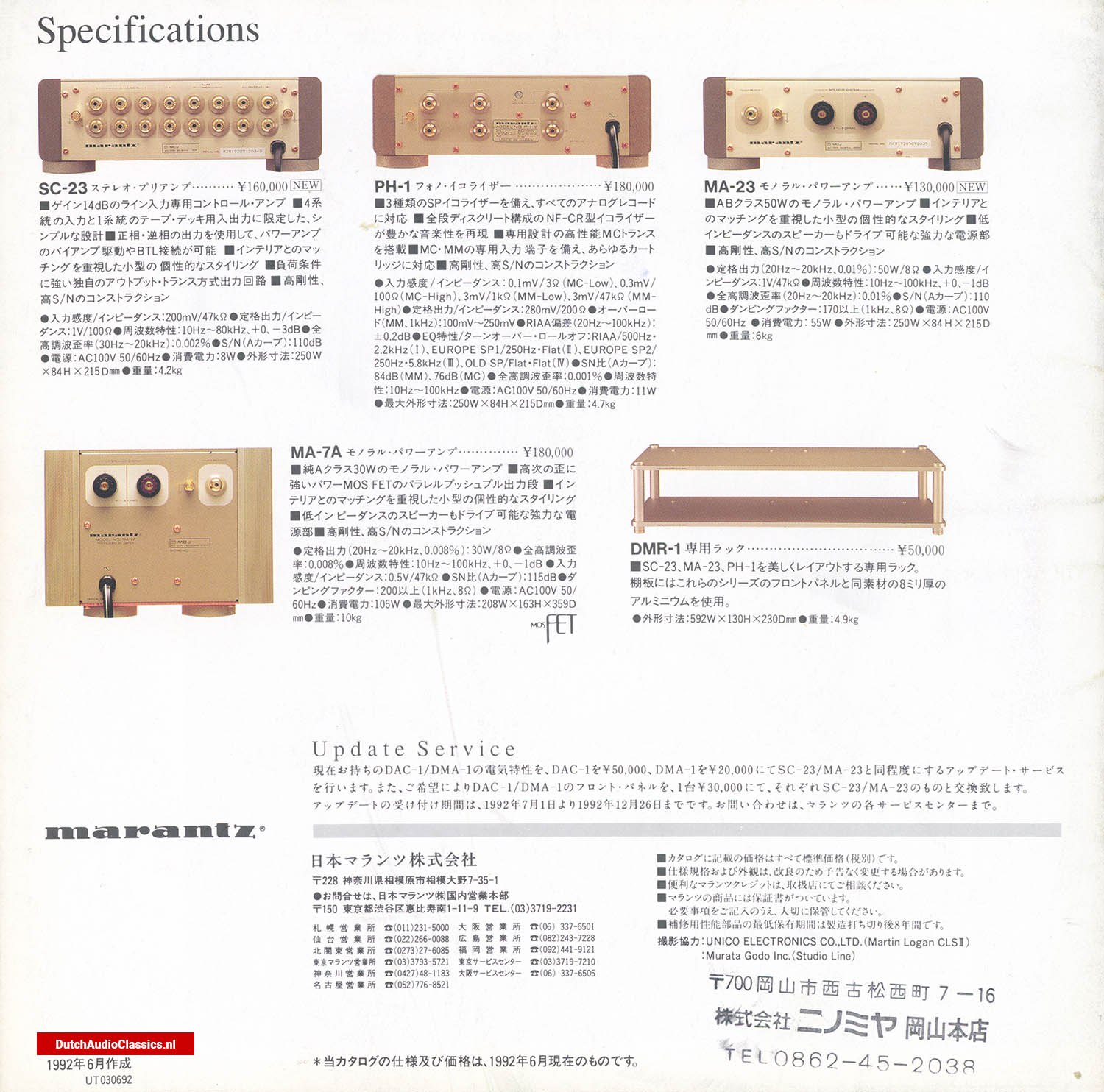
Further along the chain, the pre/power combination seems slightly more powerful that its predecessors, but smoother, too. The latter is a result of the power amps' composure and the pre-amp's seemingly limitless headroom. Even with the Sonus Faber Minima Amators, the system never appeared to be working too hard. It delivered enough grunt to exploit the dynamic capabilities of the Celestion Kingston, producing unharnessed bass from a selection of non-synthetic reggae classics, and it reminded my why I consider J Geils' Sanctuary (just reissued on BOO) to be the most majestic rock album of the last 25 years. Music Link's unexpected forcefulness, composure and transparency let this near-bombastic set swell easily to the max, and I had the feeling that most of the speakers would clip before the amps did. So much for thinking of 50W as inadequate.
Although I understand the inarguable logic which states that one-make systems are to be preferred to mongrels because of innate compatibility and synergy, practice often shows that mixing and matching can yield better results. But Marantz and Ken Ishiwata have addressed these concerns in a package which isn't just any 1990s high- end system in a one-make bundle: it also features an analogue source. Far dearer than most other all-in-one systems from major manufacturers, the Music Link set-up remains, in its latest guise, the most domestically acceptable high-end system I can name. And it shows yet again that downsizing needn't be a compromise.
Gorgeous? You bet. But say it twice, because it describes both the look and the sound.
Music link by Marantz - The philosophy
Music Link products are designed and built for committed music lovers. In choosing the name Music Link, Marantz emphasises the need for top audiophile equipment to pass-on nothing but the emotions to the listener.
Marantz is developing an dedicated range of carefully designed hi-fi products to fulful this special role - all will cary the exclusive name Music Link.
The philosophy is simple. Out goal is the highest possible performance coupled with outstanding build quality. Only when our engineering and design teams are satisfied that a new product meets theses strict requirements will the designs be released for production.
Over the years Marantz enginieers have gathered information on the design and construction of components and ont he best materials to use in pursuit of sonic excellence. But the careful choice of materials, painstaking component development and final circuit design, followed by intensive measurement and redesign is simply not enough. All Music Link equipment has to pass a far harder test - critical auditioning.
If listening does not reveal a trully transparent sound with the widest dynamic and frequency characteristics, a sound capable of the finest stereo focus, the product is redeveloped.
Only when the product performs flawlessly with a range of musical sources to the satisfaction of some of the most demanding listeners does the equipment earn its place among Music Link products. As music lovers ourselves we are staking our reputation on the musical performance of Music Link.
Unwanted features are not offered. All Music Link products are designed to do its job simply and well. The less elaborate the circuit designs the better the sound. In our amplifiers short signal paths and the highest quality components ensure maximum fidelity. And as in our loudspeakers, where components do not exist to be bought or techniques remain untried we have made or invented them.
The build quality of all Music Link products mirrors the qualities of its performance. Luxury solid metal front panels are as important in cutting down performance-robbing vibratios as they are to enhance the pleasure of ownership. The elegant styling, slim cabinets and rounded courners of Music Link speakers are no mere cosmetic whim but are dictated by by acoustic laws. That does not prevent our use of the finest veneers and lacquers to enhance those looks.
For the styling of Music Link product reflects the musical qualities it embodies. Distinctive, understated cosmetic design underlines the feelint of precision, competence and outstanding musical performance.
Music Link by Marantz - truly a link between musicians and listener.
